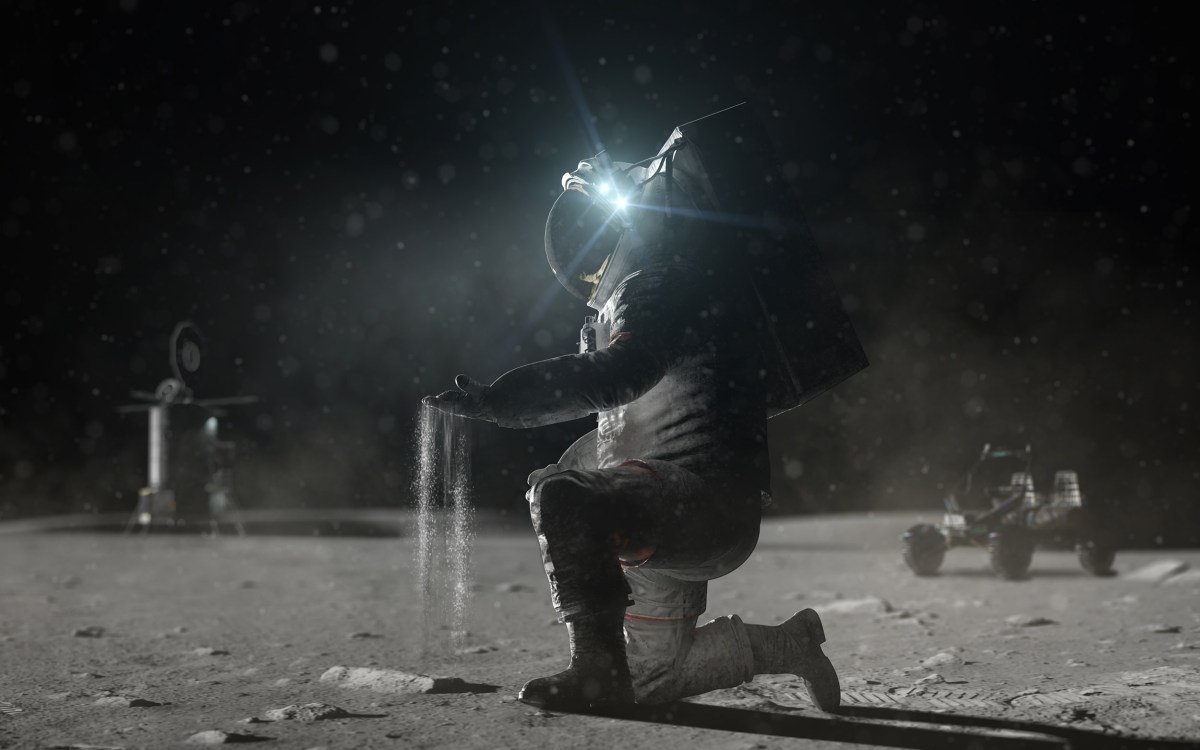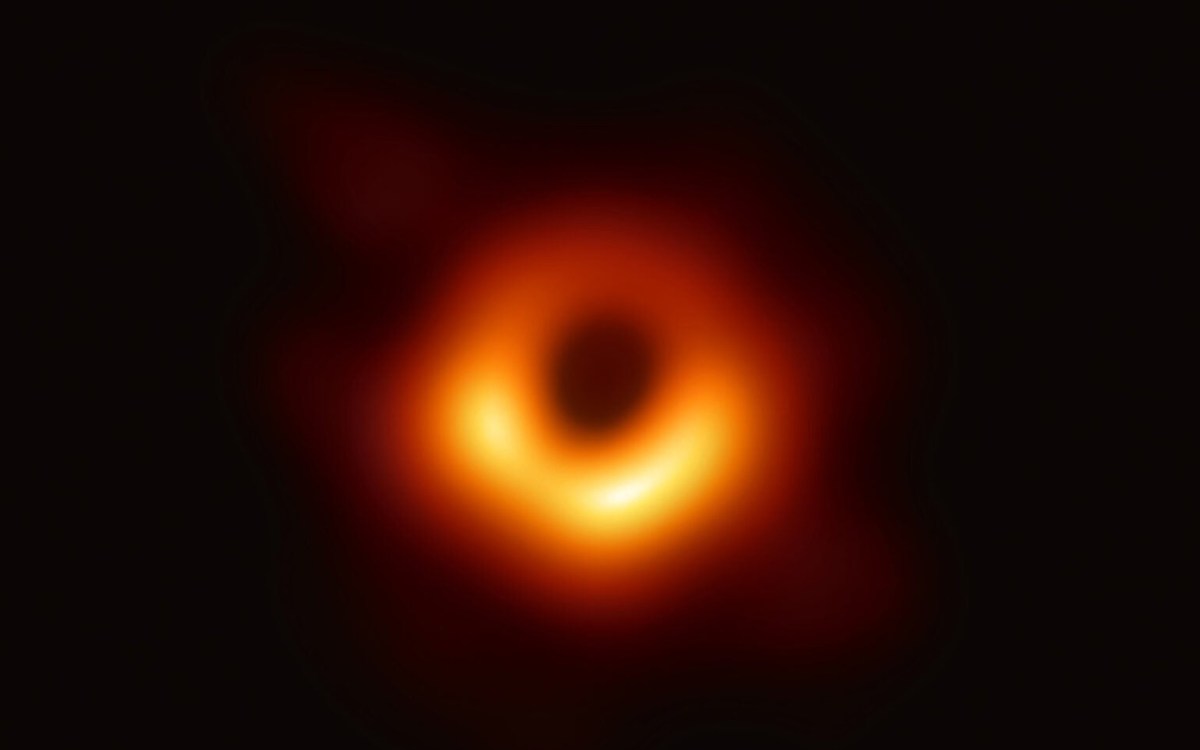Making the immense graspable

New book examines power of computer simulations to test otherwise untestable theories, offer insights into history of universe
Anyone can look up into the sky at a galaxy. A powerful telescope can help. But how much of it can you really see, much less understand, this way?
That’s where computer simulations come in, according to Andrew Pontzen, professor of cosmology at University College London.
Pontzen spoke Friday, as part of the series Harvard Science Book Talks, about his recent book “The Universe in a Box: Simulations and the Quest to Code the Cosmos,” which he wrote for a general audience. The book focuses on how simulations help scientists study the mysteries of the universe.
Computer simulations have become critical tools for cosmologists and astrophysicists. By modeling complex astrophysical phenomena that are impossible to observe in a lab or any other way we currently have available, simulations provide a glimpse into the formation of galaxies, stars, black holes, and the workings of the cosmos.
With the help of modern supercomputers that can run massive calculations, simulations have enabled scientists to do what they couldn’t do with pencil and paper, Pontzen said.
“The question that we have as cosmologists is twofold: First, how did the universe come to be structured in this way?” said Pontzen. “And how does it relate to the story of our own solar system, the sun, and the earth? It turns out computer simulations are a great way to get to grips with these kinds of questions.”
Visible materials in the universe, such as stars, planets, and the Milky Way and Andromeda galaxies, can be seen directly through telescopes, but they comprise only about 5 percent of the total mass and energy of the universe.
Cosmology, the study of the universe, has been revolutionized in the last few decades by the development of faster, more powerful supercomputers. One hurdle for researchers in the past has been the immensity of the universe. There might be trillions of galaxies, each with hundreds of billions of stars. To the naked eye the galaxies appear scattered at random, but simulations show they are organized in a pattern, the so-called cosmic web.
But as much as simulations provide insights into the structure of the universe, they also reveal only “the tip of the iceberg,” said Pontzen.
Visible materials in the universe, such as stars, planets, and the Milky Way and Andromeda galaxies, can be seen directly through telescopes, but they comprise only about 5 percent of the total mass and energy of the universe. The remaining 95 percent includes materials such as dark matter and dark energy, which at the moment scientists are unable to probe in any laboratory.
Simulations have proven to be effective in predicting the behavior of dark matter, an extra material in the universe that can’t be seen but can make its presence felt through gravity.
The story of how simulations came to be goes back to the 19th century, said Pontzen. In his book, he pays tribute to computer pioneers Charles Babbage and Ada Lovelace. An English mathematician, Babbage is considered the “father of the computer” for having built a computing machine in 1821. Lovelace, also an English mathematician, wrote a set of operating instructions, or an algorithm, for Babbage’s machine, years later.
Simulations couldn’t exist without computers, Pontzen said.
“Ada Lovelace wrote a really beautiful description of what a simulation essentially is,” he said. “She said, ‘Those who view mathematical science not merely as a vast body of abstract and immutable truths will regard with special interest all that can tend to facilitate the translation of its principles into explicit practical forms.’”
As an example of a pioneering use of simulations, Pontzen highlighted the role of meteorologist Lewis Fry Richardson, who applied math and physics to weather forecasting in the early 1900s. “He attempted to do simulations of meteorology to make weather forecasts before computers were even available,” said Pontzen. “He was trying to do this by hand, using what looked like a giant spreadsheet he was filling in, doing loads of calculations by hand in order to translate theoretical physics into something really practical.”
With its alluring ability to visually replicate systems or phenomena impossible to study in a lab or outer space, computer simulations have been embraced in medicine, climate science, economics, and epidemiology, among other disciplines.
Simulations have also captured people’s imaginations and popular culture. In “The Matrix,” a science fiction movie released in 1999, humans are trapped inside a simulated reality created by intelligent machines. In 2003, Swedish philosopher Nick Bostrom published a paper titled “Are We Living in a Simulation?”
In his book, Pontzen deals with the question. During the talk, the event’s moderator, Atınç Çağan Şengül, Ph.D. ’23, didn’t miss the chance to ask whether it’s possible that we are living in a simulation. The cosmologist was quick to dismiss it, saying that even if it’s a fun idea to toy with, scientific evidence does not support the existence of “some external reality.”
“I think we’re in quite a lot of trouble when we start believing in that kind of thing because then, by implication, everything we’re doing in cosmology is a bit of a waste of time, because all that stuff out there is not real,” said Pontzen. “It’s first at all a problem for cosmologists, but it’s also a problem for all of us, as humanity, because it’s creating a sort of doubt on the nature of reality … To me, this set of ideas is quite antithetical to scientific progress. It’s almost like encouraging us just to give up on knowing what’s really going on.”









